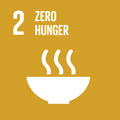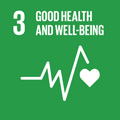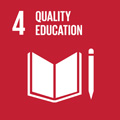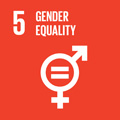- Docente: Aurelia Santoro
- Credits: 8
- SSD: MED/04
- Language: Italian
- Teaching Mode: In-person learning (entirely or partially)
- Campus: Forli
- Corso: Single cycle degree programme (LMCU) in Medicine and Surgery (cod. 5905)
-
from Oct 02, 2024 to Dec 11, 2024
Learning outcomes
At the end of the course the student: - has clear concepts of disease, etiology and pathogenesis, also knows the etiology of morbid processes and understands the pathogenetic mechanism of their development; - knows the fundamental biological defenses implemented in response to pathogens, the morphological alterations that the latter cause in cells and tissues and the systemic and functional consequences for the organism; - is capable of connecting molecular, morphological, microbiological, immunological and physiological knowledge with the etiopathogenesis of the disease processes and the fundamental pathophysiological mechanisms of the organism; - will be able to use basic biomedical knowledge and general pathology and pathophysiology for the critical interpretation of experimental and clinical data; - is able to understand the reasons for the signs and symptoms of morbid processes and has the basis for a clinical practice based on objective findings.
Course contents
INTRODUCTION
Objectives of the integrated course
Concepts of disease, etiology and pathogenesis
ENVIRONMENTAL PATHOLOGY
Physical agent, Local and systemic effects of high and low temperatures. Damage from smoking Pathology caused by chemical agents Ethanol: absorption and detoxification Ethanol: acute and chronic toxic effects Pathology due to biological agents Local and systemic effects of endotoxins Pathogenic mechanism of exotoxins (diphtheria, cholera, tetanus and botulinum)
CELLULAR PATHOLOGY
Cellular adaptations Physiological and pathological atrophy Physiological and pathological hypertrophy Physiological and pathological hyperplasia Metaplasia and dysplasia Reversible cell changes Aetiopathogenesis of cell damage Vacuolar degeneration Steatosis: etiology and classification Steatosis: pathogenetic mechanisms Cell death Apoptosis: etiopathogenesis Apoptosis: morphological alterations Necrosis: etiopathogenesis Necrosis: classification; Ferroptosis, Necroptptosis and Pyroptosis: etiopathogenesis and classification
EXTRACELLULAR ACCUMULATION PATHOLOGY
Systemic amyloidosis Localized amyloidosis
DAMAGE RESPONSE MECHANISMS
Acute inflammation General features Etiology Vascular phenomena Formation and functions of the exudate Cellular phenomena Phagocytosis Chemical mediators: plasma proteases Chemical mediators: cellular products Classification Outcomes and systemic effects Chronic inflammation Nonspecific forms Granulomatous forms Pneumoconiosis Etiopathogenesis of tuberculous disease Outcomes and consequences of tuberculous disease
REPAIR MECHANISMS
Tissue repair and connective tissue formation Granulation tissue Wound healing Pathogenesis of sclerosis and cirrhosis Morphological aspects and consequences of liver cirrhosis
GENERAL PHYSIOPATHOLOGY
General pathophysiology of haemostasis
Pathophysiology of endothelial cells Aetiopathogenesis of vascular purpura Etiopathogenesis of thrombocytopenia and thrombasthenia Etiopathogenesis of coagulation defects Etiopathogenesis of disseminated intravascular coagulation
General pathophysiology of vessels and circulation Classification of arteriosclerosis Risk factors for atherosclerosis Formation and pathogenesis of atheroma Consequences of atherosclerosis Etiopathogenesis of thrombosis Thrombosis classification Etiology and classification of emboli Pathogenesis and consequences of embolism Aetiopathogenesis of infarction Aetiopathogenesis of hypertension Aetiopathogenesis of shock Aetiopathogenesis of hypoxia and cyanosis Hypoxic, anemic, stagnant and histotoxic hypoxia
Endocrine, metabolism and metabolism pathophysiology Etiopathogenesis of diabetes mellitus Consequences of diabetes Etiopathogenesis of transudative edema Localized and generalized oedemas Calcium metabolism Dystrophic and metastatic calcifications
Pathophysiology of thermoregulation
Etiopathogenesis of fever and non-febrile hyperthermia
Readings/Bibliography
V. Kumar, A.K. Abbas, J.C. Aster. “Robbins e Cotran - Le basi patologiche delle malattie”, 9a edizione, 2015, Casa Editrice Edra, Milano
Pontieri G.M. “Patologia Generale e Fisiopatologia Generale", VI Edizione, 2019, Piccin Editore
Selected scientific literature
Teaching methods
Lectures with ppt presentations.
Multiple choice questions by quiz on wooclap platform
Flipped classroom method for some topics
Assessment methods
The exam is oral with questions on theory and questions on the Pathology laboratory.
The final grade is calculated as the arithmetic mean between theory and laboratory.
The exam is passed if a mark of at least 18/30 is obtained in each course.
Teaching tools
The teaching material presented in class will be made available on https://virtuale.unibo.it/ in electronic format
Office hours
See the website of Aurelia Santoro
SDGs




This teaching activity contributes to the achievement of the Sustainable Development Goals of the UN 2030 Agenda.
